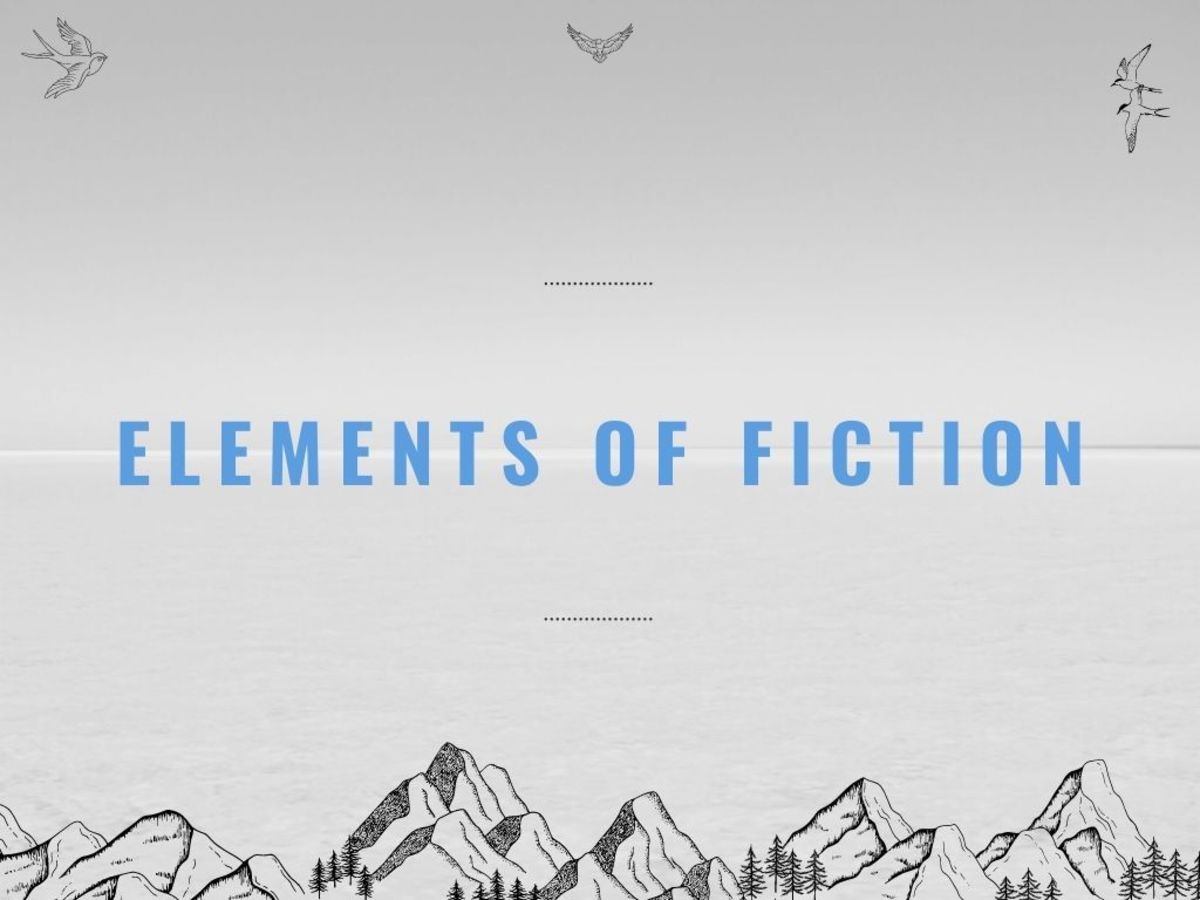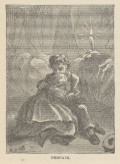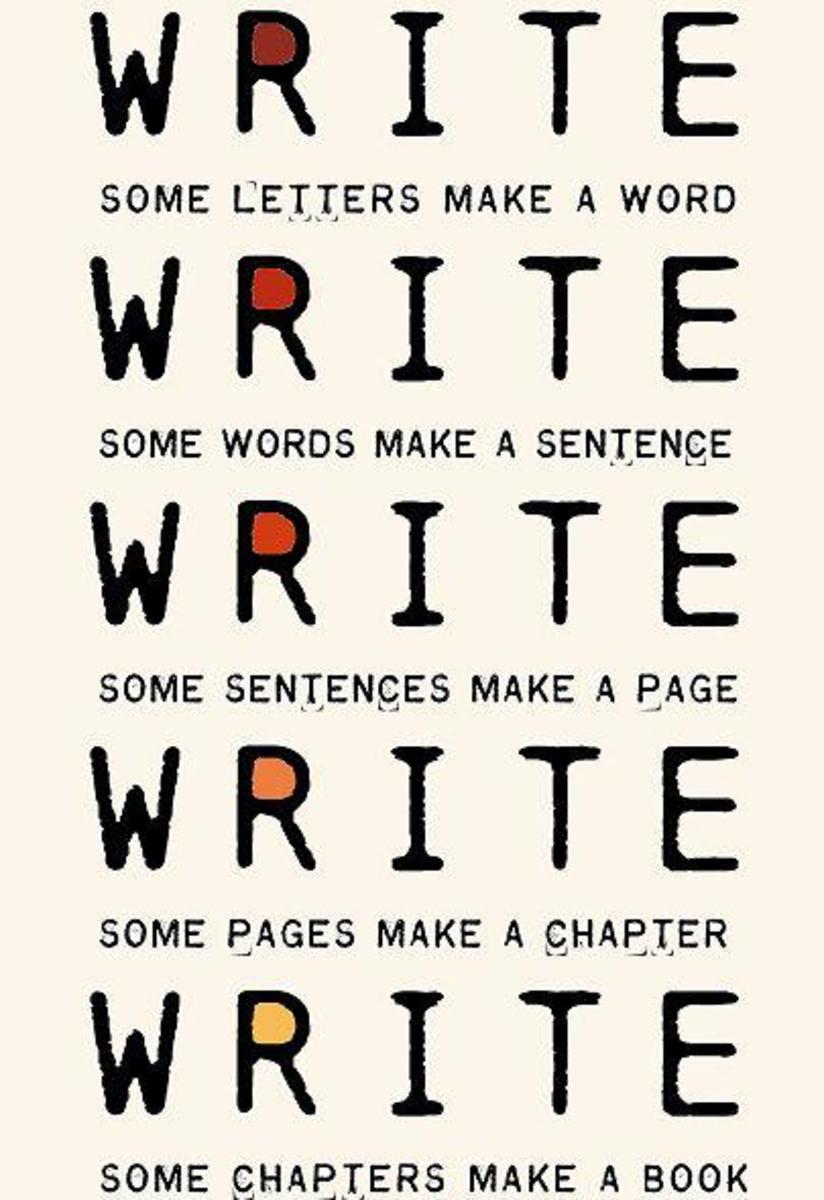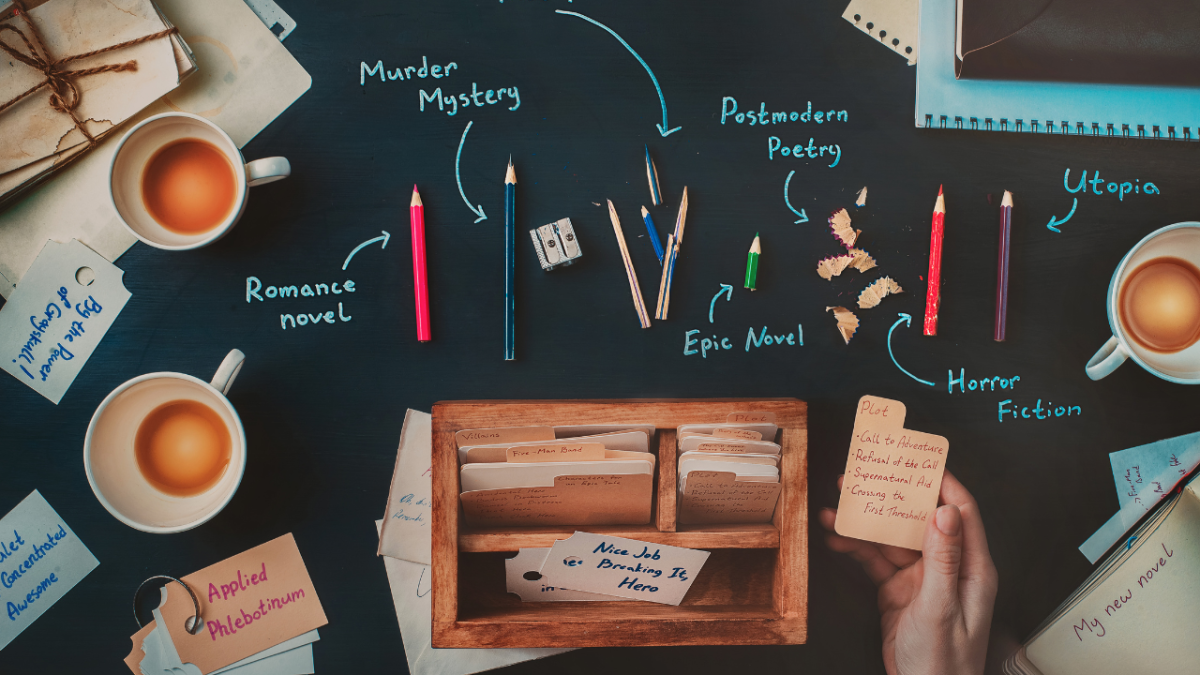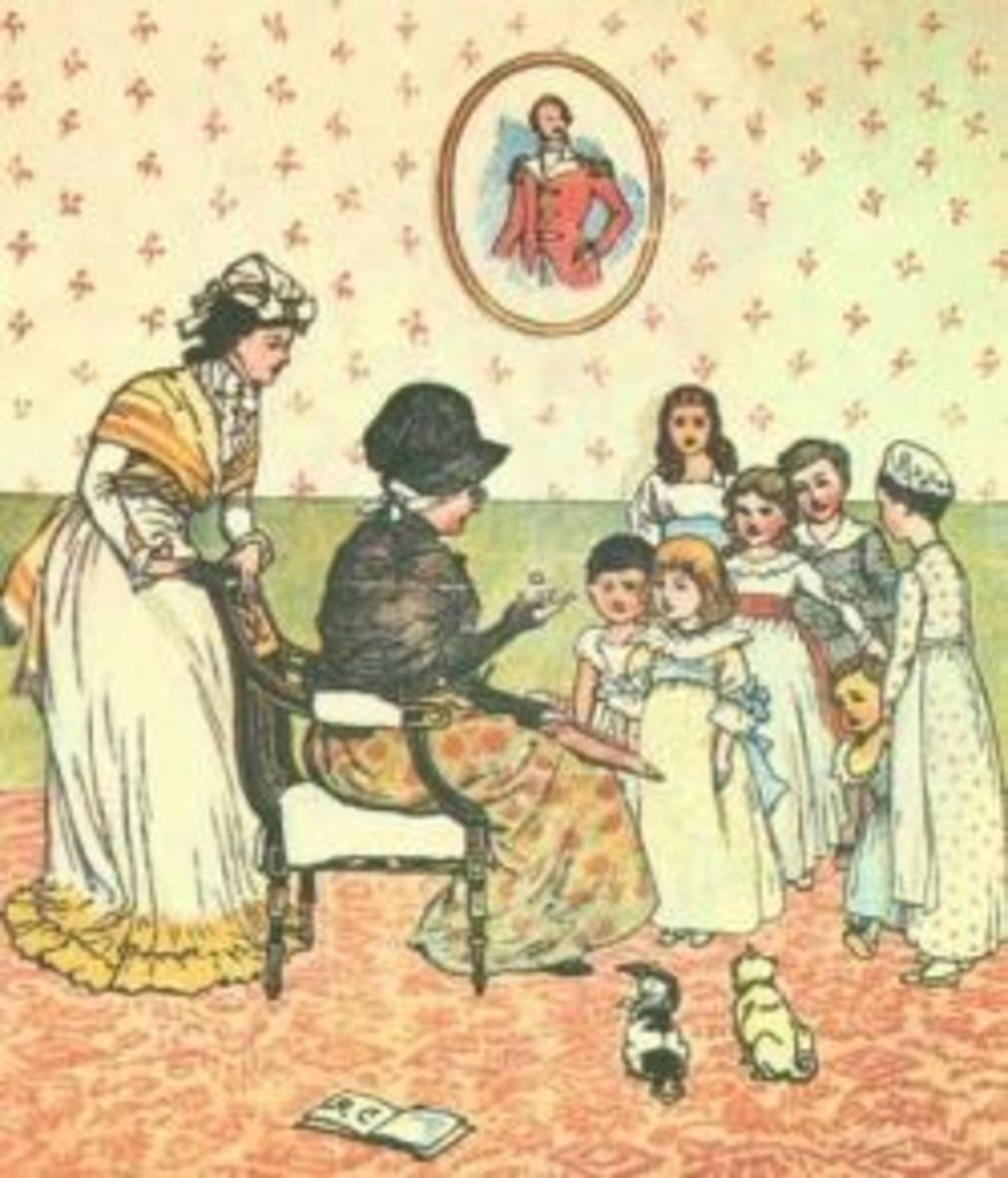Creative Writing 101: Plot

What is it that drives us to read? Why do we pick a work of fiction and start to turn pages incessantly even if its 2:30 in the morning? The rational sequence of events in a story is known as plot. A well executed plot will have its readers turning pages, while a bad written plot will be tossed aside after a few words. To learn how to execute a well crafted plot it is important to first understand what it is. This week we will dive into the definition of plot, its parts, and some tips to craft and enhance plot.
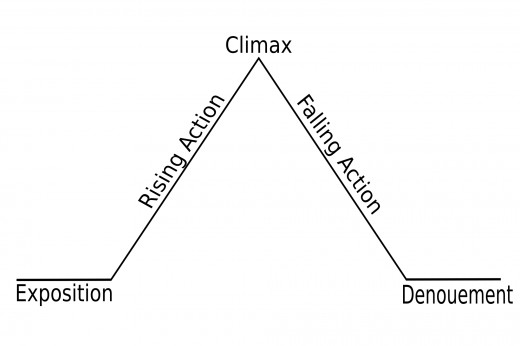
And the plot thickens...
According to the Oxford Dictionary of Literary Terms, plot is “the pattern of events and situations in a narrative”. The dictionary makes the distinction between plot and story. The difference would be that a plot is the selected version of events as presented to the reader or audience in a certain order and duration, while a story is the full sequence of events as we imagine them to have taken place in their 'natural' order and duration. It is important to distinguish the differences between plot and story, since the plot is part of a story and not the logical sequence of events known as plot. In simpler terms, plot is what happens in a story and the why of it. By using a well crafted plot, writers can make their audience care about the characters of a story and what happens to them.
Plot is divided into several stages. This stages are easily accommodated in a story arch, or a diagram of what plot looks like. A plot that fits in a story arc diagram is formed by five stages. These stages are: exposition, rising action, climax, falling action, and conclusion.
Exposition: This is the opening of the story, where the author presents the main character, or characters. Here the conflict is presented. In fantasy, the universe will be presented at this point. Here, readers can assimilate the rules of the Universe they are reading about.
Rising Action: This is the series of events that lead to the climax. In this part of the story, things get complicated for the protagonist. This is the stage of the story where tension is building up, and “the plot thickens”.
Climax: The pat with highest tension in the story. Here the story shifts gears from tension to calm. Here we start to fall into falling action.
Falling Action: The unfolding of events that leads to the release of tension. The story smoothly transitions to the conclusion.
Conclusion: The resolution of problems. Here is where the story ends and all the plot lines unravel into a resolution.
Now that we understand what plot is, its parts and structure, we can learn how to craft interesting, page -turning, late-night-reading worth plot.
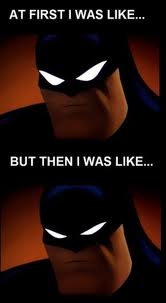
How to craft interesting, well-structured plot
As I mentioned before, a well crafted plot will keep its readers on the edge of their seat, biting their nails, and with an uncontrollably need to know what happens next. When writing plot, a writer must keep in mind logic, pacing, and organization.
1.Logic
A good plot will take its readers through a logical journey. This doesn't mean that your plot can't be difficult, intricate, or challenging. What this means is that your plot has to reward its readers. This could be accomplish by giving your reader clues to guess what will happen in the climax. A satisfying plot is the one that also has a good, logical ending. This means that you have to make sense of everything that happens in the story. Usually, a bad crafted plot will leave its readers feeling like they just wasted their time, because even if the story was good, it made no sense in the end. It's like when you go to the movies and when the credits are rolling you have the necessity of yell “What?! That's it?” not because you want to keep watching, but because nothing made sense in the end. This is what makes you rage from your seat to your car, and then wonder where your life is going because those two hours of your life will never come back to you. (This happens to everybody, right? Not just me?)
To evade doing the same thing to your readers, there are somethings that must be avoided.
For starters, don't leave any issues unresolved, unless you are setting up for a series. If you are, make sure to give your readers a clue that will indicate this specific plot point would be addressed in a new story. If you are not doing that, you need to solve all the issues you introduced in your story. In other words, don't leave anything unresolved.
Let your characters solve their issues. In other words, there should be no easy way out of any problems. I don't care if your character lost a penny. Either he finds it, replace it, or learns to leave without it. Explain what happened. This also means there shouldn't be a deus ex machina. What's that? What is deus ex machina, you say? It means God's machine, and it's a plot device that solves an issue that seem to be unresolvable by the introduction of a new event, character, or event. The most recent example of this that I can think of is perhaps in The Dark Knight Rises. In this movie Batman miraculously saves everyone, including himself, from an explosion taking the bomb in his plane away from the city a few seconds before it explodes. I am a huge (HUGE) Batman fan, but this makes me raise an eyebrow and wonder how this is possible. The deus ex machina is usually employed to force a happy ending, most of the time the resolution is not believable. If you want a happy ending, you need to work hard through the falling action to craft it. Deus ex machina is an overused and a lazy way of forcing a happy ending. Going back to the Dark Knight Rises example, the movie has a happy ending. How tragic would've been if Batman did died? But no, he is later shown in a coffee shop in Europe with cat woman. Yay, endless happiness! No but seriously, this ending feels rushed and forced. A way to fix this is explaining how Batman saved everyone (no, the explanation “Because he's Batman” does not apply here), or perhaps don't utilize the whole bomb situation as a deus ex machina, or even better: dare to kill him.
Speaking of endings, it is a good idea to decide very early in the writing process what kind of ending will your story have. Remember that a good ending is key to reward your readers. What kind of ending fits your story better? Not all endings have to be happy, or disastrous. You can certainly still have a happy ending even if one of your characters died. It be a bitter-sweet-kind-of-ending that might leave your readers satisfied. A good ending might not be liked by all your readers, but if it makes sense, they will say “I hated it, but I couldn’t see it ending any other way”. In short, a logical ending is a good ending.

2. Pacing
Pacing is how fast your story can be read. Good pacing would keep readers interested. Pacing can be a crucial element capable of turning your story from good, to amazing. The trick to using pacing is to remember there are different types of pacing and techniques to make sure your story is read in the pace that you intent it to be read. There are two types of pace: fast and descriptive. Fast pace is used to narrate action, while descriptive is for slow paced scenes. The differences between paces are very important as you wouldn't want to deliver an over descriptive fighting scene to your readers, or a fast pace romantic scene. One would make your story feel slow and the other will make important moments feel overlooked. A good strategy to make your pace clear is to watch the length of your sentences. Use shorter sentences in action scenes. Shorter sentences can give the feeling to the reader that everything is moving faster, because they are reading periods more often. For slower scenes use long sentences and heavy narration. Descriptions are very important to make something stand out. If you are narrating an important moment, like a romantic scene, use descriptions and long sentences to take readers slowly along the scene. Another good tip is to watch the tone you use with your pace. You want a more calm tone for slower scenes and a more aggressive one for moments filled with action.
3. Organization
An organized plot does not mean to have a plot that takes you from beginning to end. A story structure can start anywhere. You can start at the middle, at the very beginning, or at the end. The meaning of organization, plot wise, is that your plot can take you from point A to point B in a logical order. Organization means no plot holes and no inconsistencies. Good techniques to keep your plot neatly organized and inconsistencies free is to have an outline and a style sheet close by.
An outline is a deconstruction of the whole story in main plot points. This can be very helpful, especially if you tend to go on tangents in your writing. Some writers are adamant to not follow an outline, because they feel like then they can't be spontaneous. An outline shouldn't bind you to a structure completely. Take it as a friendly guide that can be changed and moved around. An outline's purpose is so you can remind yourself what happens in what order and don't forget important plot points.
The term style sheet comes from the Editorial Style Sheet. According to Mignion Fogarty, the Grammar Girl, an editorial style sheet is used to “elineate style standards a company or publisher prefers so that all written documents remain consistent”. For writing, the purpose is basically the same: to keep all written material consistent. For a story, a style sheet can be used to note every important detail about your setting and your characters. In your style sheet you can note all the small details about your characters. For example, their height, weight, eye color, place of a scar, taste in food or music, and so on. This way you won't be struggling to remember this tiny details that, if not remembered correctly, can create inconsistencies in the story.
Reflexion
A good plot is not only the one that keeps readers at the edge of their seats, wanting to read more. A well crafted plot is a logical, paced, and organized. A plot that doesn't reward its readers, that is too fast or too slow paced, and that is full of inconsistencies stops being attractive. This sort of plot survives 100 pages or less for novels, and five paragraphs or less for short stories. Writing perfectly interesting plot is a delicate part of the craft of writing. Plot crafting is often compared to baking. What happens if you were baking a cake, and you add too much of any ingredient, bake it for too long, or don't follow the basic instructions? Your cake will taste terrible. I hope this tips can help you craft a very successful plot. Happy writing.
Resources
Grammar Girl: How to Make a Style Sheet. QuickandDirtyTips.com
The Oxford Dictionary of Literary Term.



